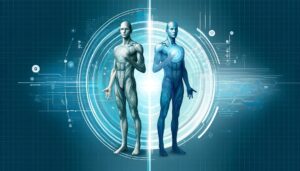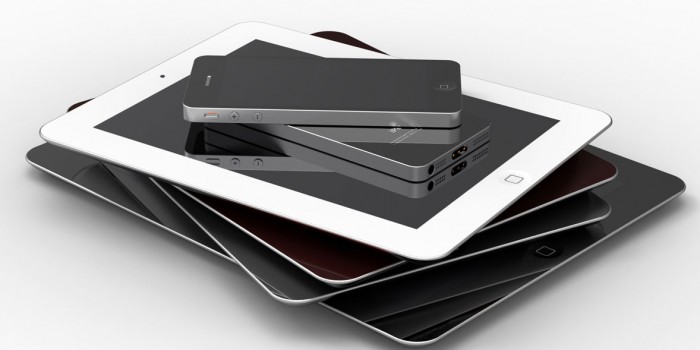Digital twin technology has proven transformative across various sectors, with healthcare experiencing some of the most significant advancements. Digital twins are transforming patient care by enhancing personalized medicine and advanced disease management, paving the way for a future where healthcare is not only predictive and personalized but also profoundly effective.

What is a Digital Twin in Healthcare?
A digital twin in healthcare is a virtual representation of a patient or an organ. This model is continuously updated with data from a wide array of sources including medical records, sensors, and genomics. This approach not only helps in understanding the health dynamics of an individual but also in crafting personalized treatment plans that are predictive and precise. This technology allows healthcare professionals to anticipate changes in a patient’s condition, respond to emergencies more efficiently and optimize ongoing treatments. Such capabilities are crucial in managing complex, chronic conditions where timely intervention can significantly alter outcomes. Moreover, digital twins facilitate a deeper understanding of disease patterns and patient responses to various therapies, enhancing the efficacy of medical interventions and paving the way for breakthroughs in medical research and drug development.
Applications of Digital Twins in Healthcare:
Personalized Medicine:
At the Mayo Clinic, digital twin technology is significantly advancing the field of cardiology, providing groundbreaking approaches to personalized patient care. This technology enables the creation of virtual models of cardiac systems, which are instrumental in understanding the complexities of heart diseases and tailoring treatments to individual patient needs. These virtual models are continuously updated with real-time data from various sources, including genomic data and clinical observations, allowing for precise and predictive treatment strategies. One of the key applications of digital twins at the Mayo Clinic involves enhancing the management of cardiac arrhythmias. By using these detailed digital replicas, cardiologists can gain deeper insights into the mechanical discoordination within the heart, improving the efficacy of cardiac resynchronization therapy (CRT). This method is particularly beneficial for patients with specific ECG characteristics, where the typical course of treatment might not be clear-cut. Furthermore, the integration of cardiovascular imaging and computational fluid dynamics through digital twins enables non-invasive assessments, which are critical for diagnosing and managing conditions like coronary artery disease and aortic aneurysms.
Operative and Surgical Planning:
At Johns Hopkins All Children’s Hospital, the Human Digital Twin Project exemplifies the innovative use of digital twins in healthcare. In one study, researchers developed digital twins for children undergoing spinal fusion surgery. By collecting data from personalized wearable devices before the surgery, they could monitor vital signs like heart rate and sleep patterns. This information helped predict various recovery scenarios, allowing for more personalized and effective post-operative care. This example highlights the potential of digital twins to enhance surgical outcomes through precise, data-driven patient modeling.
Chronic Disease Management:
The Cleveland Clinic has led the way in adopting digital twin technology to revolutionize the management of chronic diseases. With a substantial grant from the National Institutes of Health (NIH), researchers at the clinic are utilizing digital twins to reduce healthcare disparities and improve treatment outcomes for chronic conditions. This innovative approach involves creating virtual replicas of patients, which are modeled with comprehensive data from their medical records, lifestyle information and continuous biometric monitoring. Digital twins allow healthcare providers to simulate different treatment scenarios to determine the most effective strategies for individual patients. This is particularly beneficial for managing diseases like diabetes and hypertension, where personalized care plans can significantly influence long-term health outcomes. By analyzing the virtual model’s response to various interventions, doctors can predict potential complications and adjust treatments proactively. For instance, the digital twins used in Cleveland Clinic’s program help identify risk factors that may not be evident in a traditional clinical setting. This proactive model facilitates early interventions, which are crucial for preventing severe episodes and complications associated with chronic diseases. Furthermore, it aids in understanding the social determinants of health that contribute to disparities in disease outcomes. By tailoring interventions to address these factors, the program aims not only to treat the disease but also to enhance the overall well-being of patients.
Exploring the Vast Opportunities of Digital Twin Technology:
- Enhanced Decision-Making: Digital twins allow for real-time monitoring and simulation, providing deep insights into system performance and potential failures. This capability enables more informed decision-making, helping businesses and healthcare providers optimize operations and improve patient outcomes.
- Predictive Maintenance and Operations: In the healthcare industry, digital twins can forecast when medical equipment or systems are likely to malfunction, allowing for maintenance to be scheduled before any failures occur. This predictive ability not only reduces costs but also enhances the overall efficiency of healthcare operations.
- Customization and Innovation: By simulating how products perform under various conditions, companies can customize designs and innovate with fewer physical prototypes. This not only speeds up the development process but also reduces costs and spurs creativity.
- Improved Patient Care: In healthcare, digital twins can revolutionize treatments and surgeries by allowing doctors to test and refine interventions in a virtual environment, thus reducing risks associated with actual procedures.
- Sustainability: Digital twins contribute to sustainability by optimizing systems to be more energy-efficient and resource-conservative, significantly reducing the environmental footprint of operations.
Navigating the Challenges and Risks of Digital Twin Technology:
- Data Privacy and Security: The extensive data required to create and update digital twins raise significant privacy and security concerns. If the data is mishandled or intercepted, it could lead to serious privacy breaches and security threats.
- High Costs of Implementation: Developing and maintaining digital twins requires significant investment in technology and expertise, which can be a barrier for small and medium enterprises (SMEs) and developing countries.
- Complexity in Integration: Integrating digital twin technology with existing systems and processes can be complex and disruptive. Organizations may face technical and operational challenges that can hinder the adoption and scalability of digital twins.
- Dependency and Overreliance: There’s a risk that reliance on digital twins could lead to vulnerabilities, especially if these systems fail or are hacked. Overreliance could also stifle traditional skills and intuition, potentially leading to a skills gap in the workforce.
- Ethical and Legal Issues: The use of digital twins, especially in healthcare, raises ethical questions about consent and the extent to which personal data is used. Additionally, there are legal ramifications concerning liability and intellectual property rights when it comes to the use and misuse of digital twins.
Digital twin technology is reshaping the landscape of healthcare by providing precise, personalized, and predictive solutions that cater to the unique needs of individual patients. From enhancing cardiology care at the Mayo Clinic to improving surgical outcomes at Johns Hopkins All Children’s Hospital and revolutionizing chronic disease management at the Cleveland Clinic, the applications of digital twins in healthcare are vast and varied. By continuously updating virtual models with real-time data, this technology allows healthcare professionals to not only anticipate and respond to patient needs more effectively but also to foresee potential complications before they arise. As digital twins become more integrated into healthcare practices, they hold the promise of significantly improving medical outcomes and patient well-being, reducing disparities, and leading the way toward a more efficient, effective, and equitable healthcare system.





